
Birding The Dry Tortugas
We left our hotel before dawn on the 15th and drove down to Key West to catch our ferry to the Dry Tortugas, the Yankee Freedom II. The boat was crewed by merry sailors, including the boat's tour guide, Tortuga Jack, who resembled the unlikely combination of Santa Claus and Luke Skywalker. The trip out to the Tortugas takes about two and a half hours, and allowed for a bit of pelagic birding along the way. Birds were infrequently seen until we got closer to our destination, but the ones we saw were pretty much all life birds for me (with the exception of the Brown Pelicans): Brown Booby, Audubon's Shearwater, and Bridled Tern. When the Dry Tortugas were in visual range, another couple of life birds were spotted, Brown Noddy and Masked Booby, and then we docked at Garden Key, amazed at the swarms of Sooty Terns and Brown Noddies in the air.
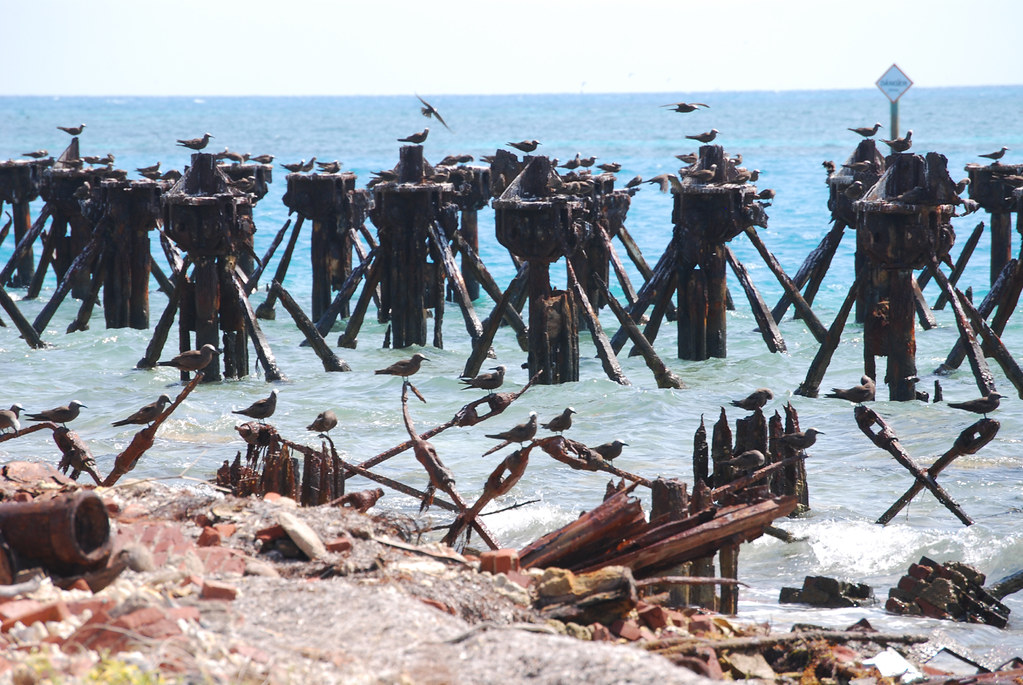
Brown Noddies on the coal dock
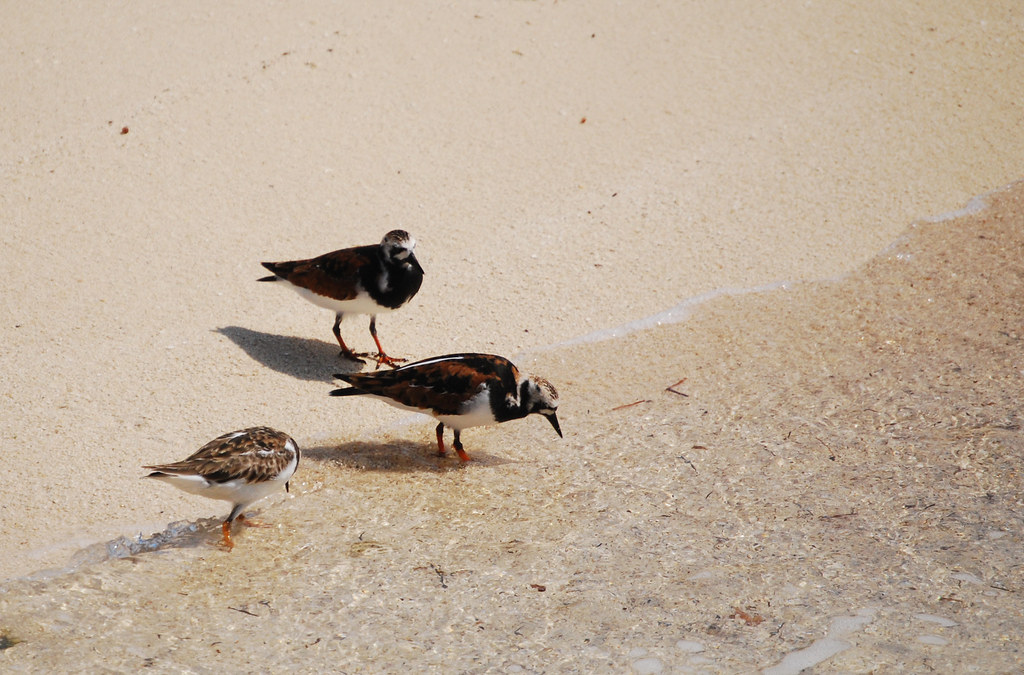
After some time, we finally picked out a juvenile Black Noddy from the surrounding Brown Noddies. This was a bird that was very subtle in its differences from its compatriots, being only slightly smaller, with a slightly longer bill. The bird also had some scalloping visible on the upperwing coverts, which was what first drew our attention to the bird. The white cap on its head was fairly bright, but to be honest, I couldn't really say in the bright sunlight that it was any more brilliant than a Brown Noddy's head. Still, the differences were real, and there was a fine life bird in the scope.
Satisfied with our Black Noddy, we left the battlements and headed back out to the dock, determined to find our Red-footed Booby. We set up the scopes again, and scanned the masses of nesting and roosting Magnificent Frigatebirds on Long Key. Finally, the bird was found! Perching with some frigatebirds on a dead tree, this was a juvenile Red-footed Boobie, which stood out from the black frigatebirds through its sandy plumage. Patient scrutiny through the scope was rewarded with views of the booby's distinctive bluish-gray, dagger-shaped bill, although it was too distant to make out leg color. No other booby features this color combination, so we were confident this was the bird. Success!
Satisfied, we boarded the ferry and headed back to Key West, with a pause to examine the Masked Boobies nesting on Hospital Key, the only location in the United States where they do so. On the way back, I scanned and scanned the ocean, hoping for tropicbirds or even a Cory's Shearwater, but no more life birds for me today. Still, scanning was rewarding, as I saw a loggerhead turtle swimming at the surface and numerous flying fish. Only as we neared Key West did I realize one thing: I had forgotten to put any sunscreen on the back of my calves!
Garden Key is home to Fort Jefferson, an antebellum US fort built with some 16 million bricks, which covers nearly the entire key. It's quite the interesting structure, and it's amazing to think about all the labor it took to transport the building materials and then build the fort in such a remote and inhospitable location.
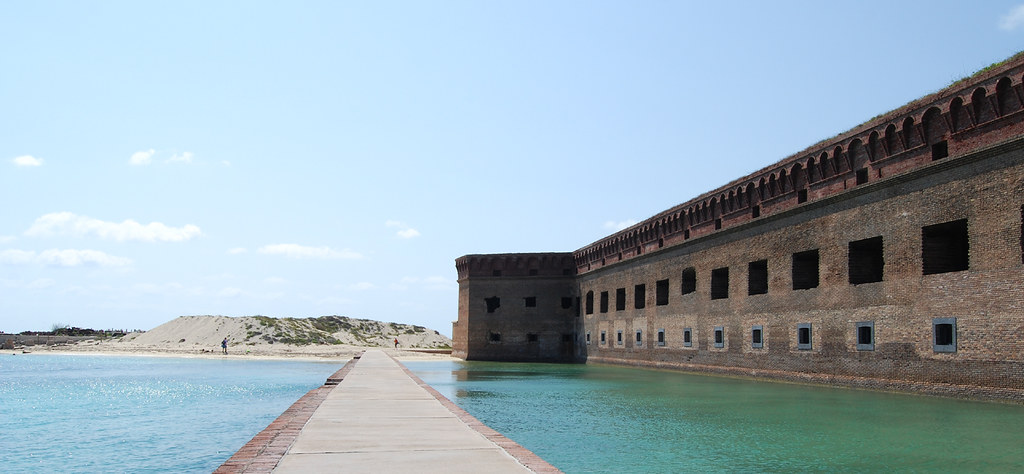
Our first order of business was to attempt to locate our two target birds: Black Noddy and Red-footed Booby, both of which had been reported recently. We set up scopes near the coal dock and spent some time scanning all the Brown Noddies, but no luck. We did add Indigo Bunting to our trip list at this point, though, and I got some decent photos of noddies and Magnificent Frigatebirds. We then set up on the dock next to the ferry and scanned Long Key for the Red-footed Booby, and again, no luck. We did have some nice company in the form of Ruddy Turnstones scurrying about our feet, though. Then it was time for lunch aboard the ferry (make your own sandwiches).

Our first order of business was to attempt to locate our two target birds: Black Noddy and Red-footed Booby, both of which had been reported recently. We set up scopes near the coal dock and spent some time scanning all the Brown Noddies, but no luck. We did add Indigo Bunting to our trip list at this point, though, and I got some decent photos of noddies and Magnificent Frigatebirds. We then set up on the dock next to the ferry and scanned Long Key for the Red-footed Booby, and again, no luck. We did have some nice company in the form of Ruddy Turnstones scurrying about our feet, though. Then it was time for lunch aboard the ferry (make your own sandwiches).

Brown Noddies on the coal dock

Ruddy Turnstones
After lunch, a few of us explored the fort a bit while those with scopes went up to the top battlements, as a park ranger helpfully pointed out that we'd get a great view of the entire coal dock from a higher vantage point. While exploring the interior, I was able to imagine what the place must look like after a major fallout - and imagination was all I had, since this late in May, there were few migrants present. Birds present within the fort included Yellow-billed Cuckoos, American Redstarts, Common Yellowthroats, Blackpoll Warblers, and a female Black-throated Blue Warbler that caused some initial confusion, due to it's skulking about in the interior of a bushy tree and its odd field marks: an overly bold supercilium and an extremely faint wing patch. Cattle Egrets were stalking about, and Barn Swallows swooped over head. After surveying the grounds, I headed up to join the scope patrol.After some time, we finally picked out a juvenile Black Noddy from the surrounding Brown Noddies. This was a bird that was very subtle in its differences from its compatriots, being only slightly smaller, with a slightly longer bill. The bird also had some scalloping visible on the upperwing coverts, which was what first drew our attention to the bird. The white cap on its head was fairly bright, but to be honest, I couldn't really say in the bright sunlight that it was any more brilliant than a Brown Noddy's head. Still, the differences were real, and there was a fine life bird in the scope.
Satisfied with our Black Noddy, we left the battlements and headed back out to the dock, determined to find our Red-footed Booby. We set up the scopes again, and scanned the masses of nesting and roosting Magnificent Frigatebirds on Long Key. Finally, the bird was found! Perching with some frigatebirds on a dead tree, this was a juvenile Red-footed Boobie, which stood out from the black frigatebirds through its sandy plumage. Patient scrutiny through the scope was rewarded with views of the booby's distinctive bluish-gray, dagger-shaped bill, although it was too distant to make out leg color. No other booby features this color combination, so we were confident this was the bird. Success!
Satisfied, we boarded the ferry and headed back to Key West, with a pause to examine the Masked Boobies nesting on Hospital Key, the only location in the United States where they do so. On the way back, I scanned and scanned the ocean, hoping for tropicbirds or even a Cory's Shearwater, but no more life birds for me today. Still, scanning was rewarding, as I saw a loggerhead turtle swimming at the surface and numerous flying fish. Only as we neared Key West did I realize one thing: I had forgotten to put any sunscreen on the back of my calves!
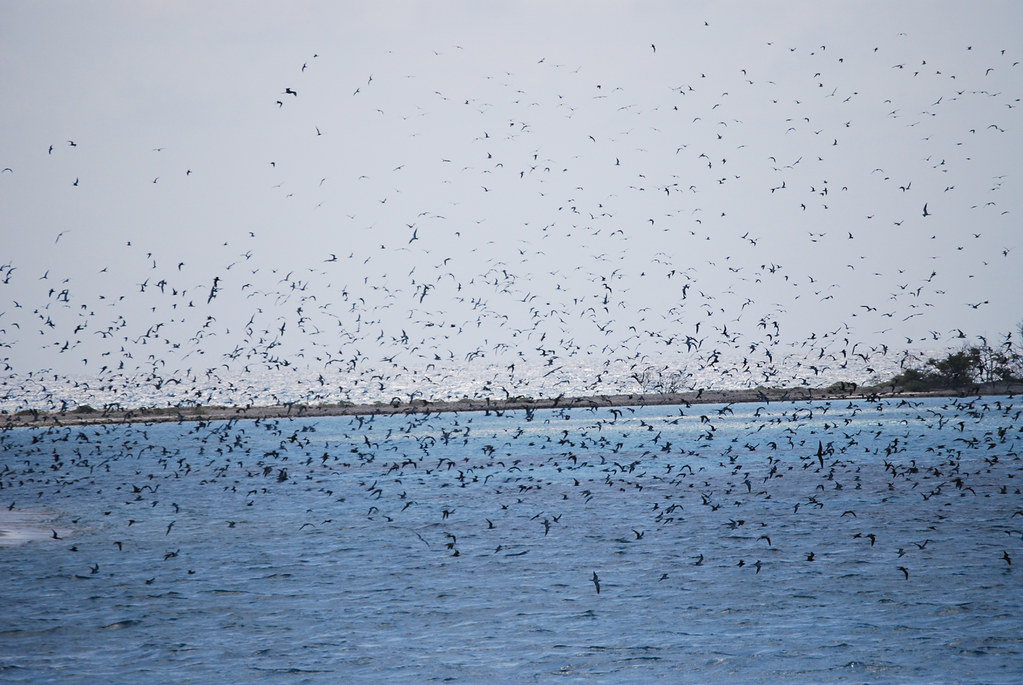
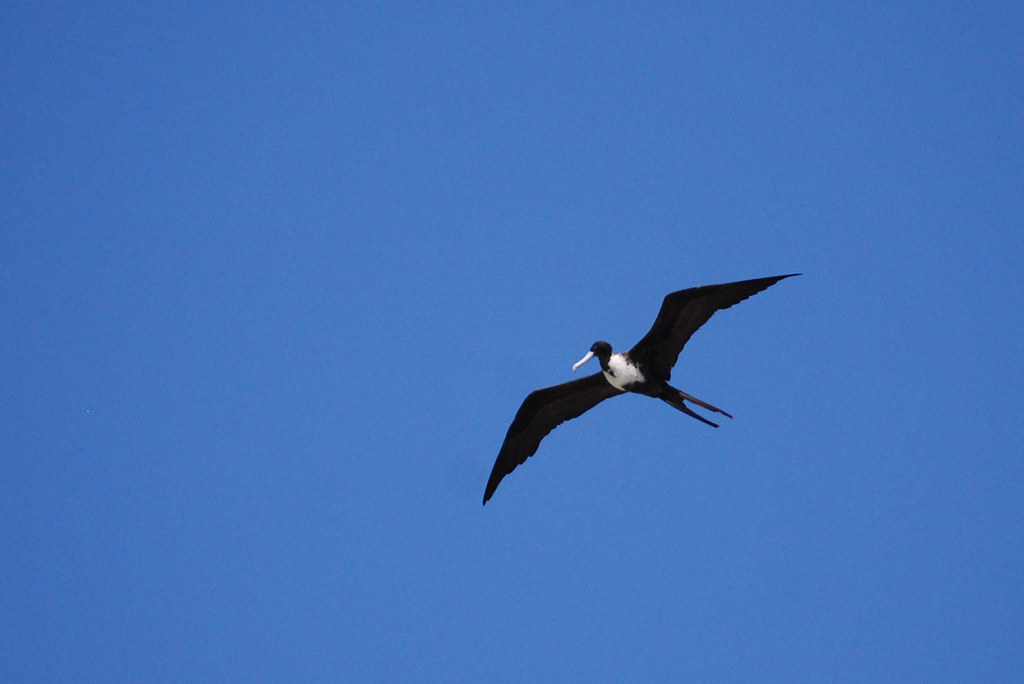
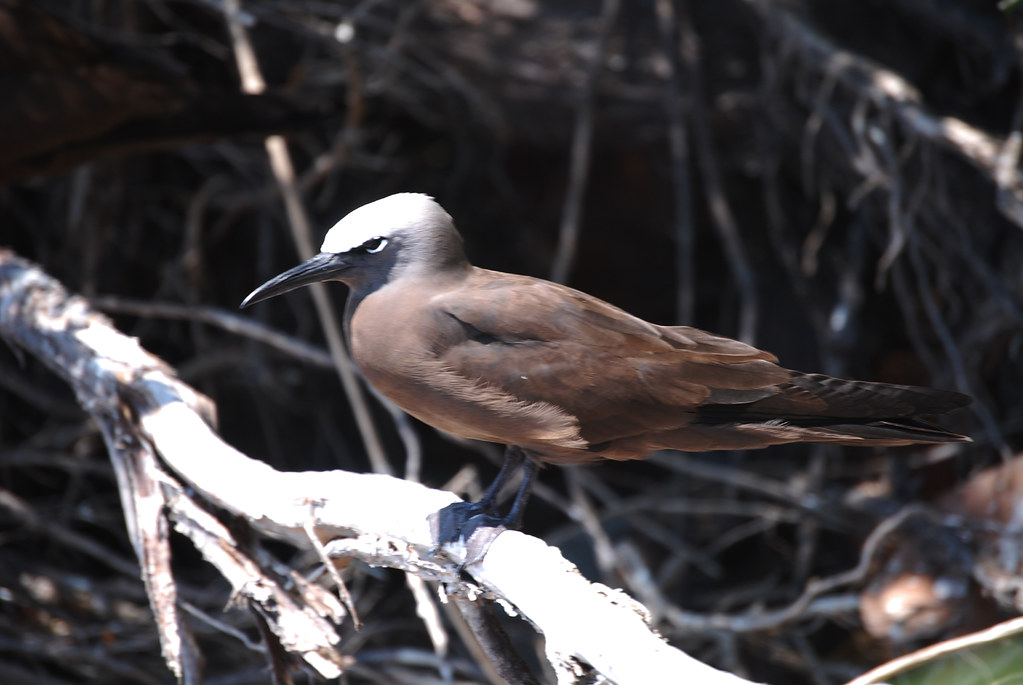

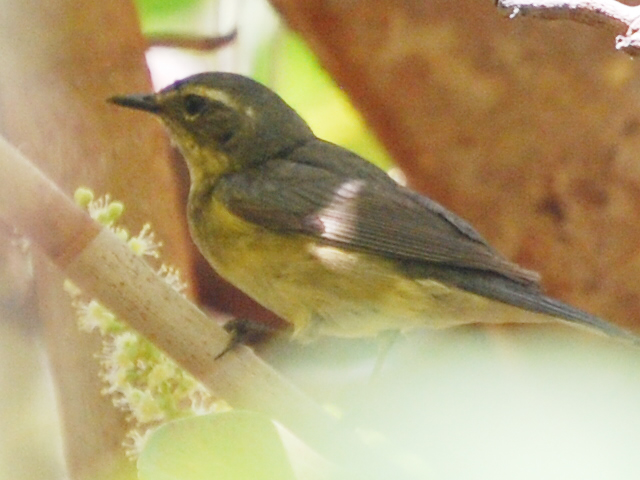


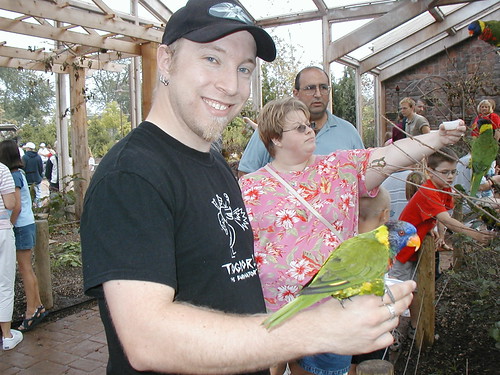



No comments:
Post a Comment